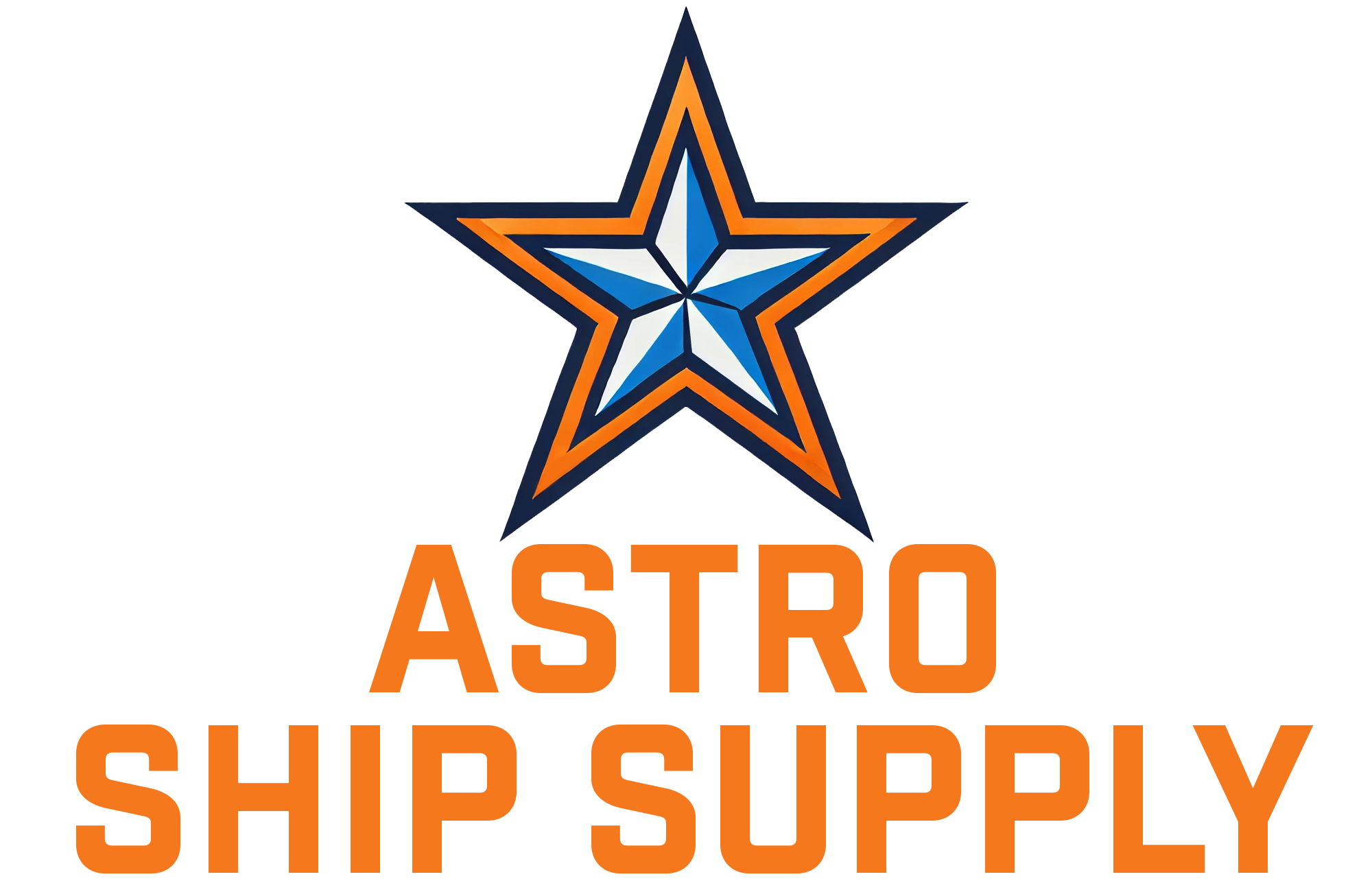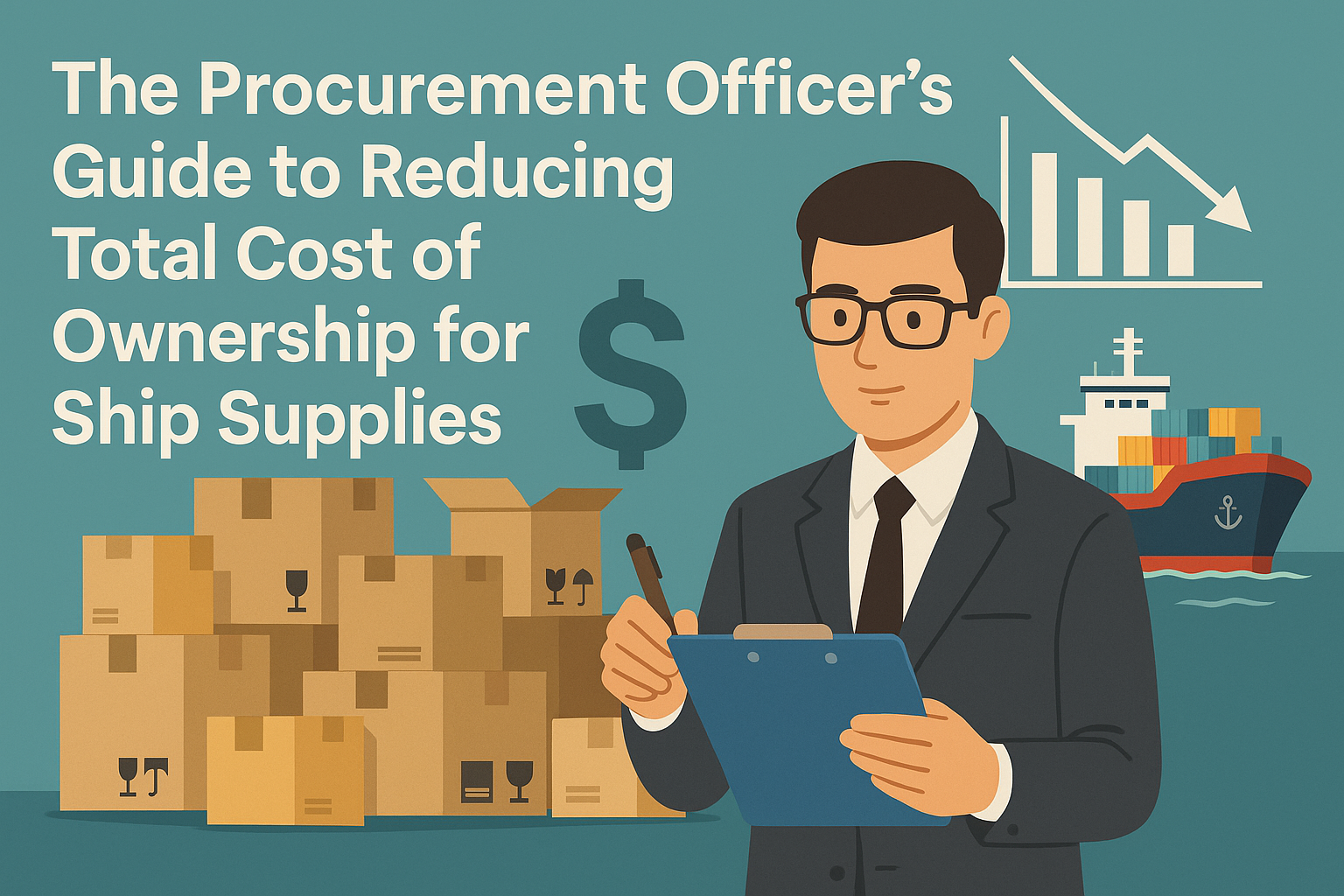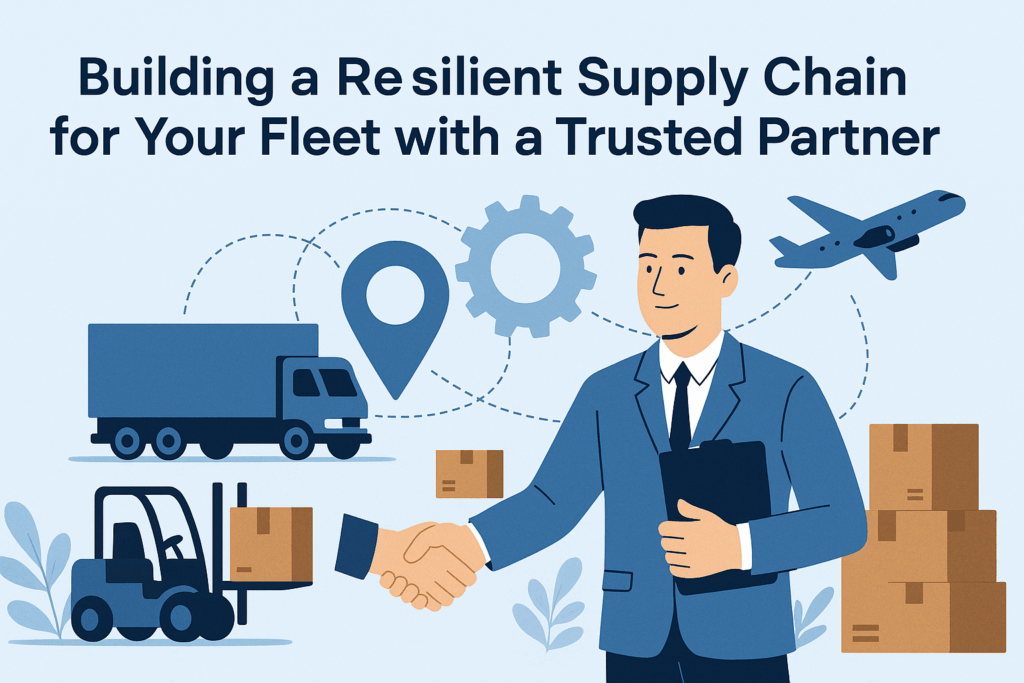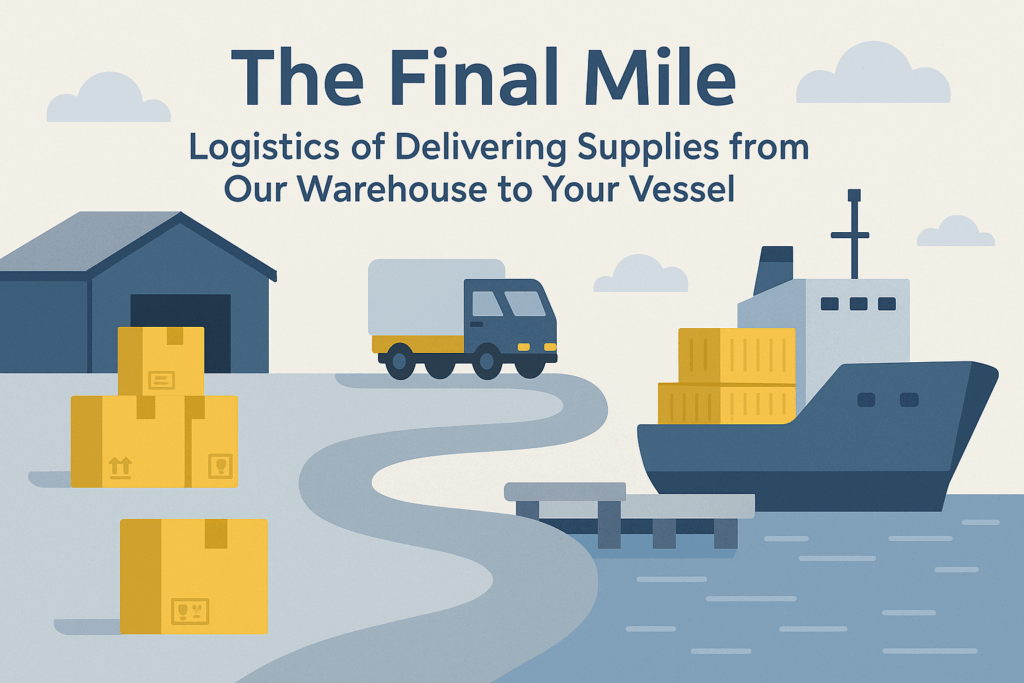This comprehensive guide delves deep into the strategies procurement officers can employ to significantly reduce TCO for ship supplies. We’ll move beyond the superficial “price tag” and explore the hidden costs, long-term benefits, and strategic partnerships that ultimately determine the real financial impact of your procurement decisions.
—
Beyond the Price Tag: Understanding Total Cost of Ownership in Ship Supply
The sticker price of a ship supply item is merely the tip of the iceberg. TCO encompasses all costs associated with acquiring, using, and maintaining a product or service throughout its lifecycle. For ship supplies, this includes a myriad of factors:
- Acquisition Costs: The initial purchase price of the item.
- Logistics & Shipping Costs: Freight, customs duties, port charges, and handling fees.
- Inventory & Holding Costs: Storage, insurance, obsolescence, and capital tied up in inventory.
- Quality & Reliability Costs: Expenses due to defective products, re-orders, repairs, and potential operational disruptions.
- Maintenance & Repair Costs: Labor, spare parts, and downtime associated with maintaining equipment.
- Administrative Costs: Order processing, vendor management, and internal labor.
- Disposal Costs: Environmental compliance and removal fees for expired or obsolete items.
Ignoring these interconnected costs can lead to an artificially low initial price masking significant long-term expenditures. A savvy procurement officer understands that a slightly higher upfront cost for a superior quality item might yield substantial savings in maintenance, longevity, and operational efficiency.
The Hidden Drain: Common Pitfalls in Ship Supply Procurement
Many organizations fall prey to common errors that inflate their TCO. Recognizing these pitfalls is the first step towards rectifying them:
- Focusing Solely on Unit Price: As discussed, this narrow view often overlooks a multitude of other cost drivers.
- Lack of Centralized Procurement: Decentralized purchasing can lead to fragmented orders, missed bulk discounts, and inconsistent quality across the fleet.
- Ignoring Supplier Reliability: A supplier offering low prices but frequent delays or quality issues will ultimately cost more in lost time and operational setbacks.
- Insufficient Inventory Management: Overstocking leads to high holding costs and obsolescence, while understocking can cause critical shortages and emergency orders.
- Neglecting Quality Control: Inferior products may fail prematurely, leading to increased repair costs, safety risks, and operational downtime.
- Poor Contract Negotiation: Failure to negotiate favorable terms, including payment schedules, delivery windows, and return policies, can lead to unnecessary expenses.
—
Strategic Pillars for TCO Reduction in Maritime Procurement
Reducing TCO requires a multi-faceted approach built on strategic planning, meticulous execution, and continuous optimization. Here are key areas to focus on:
1. Optimize Supplier Relationships and Consolidation
Partnering with a reliable and comprehensive ship chandler like Astro Ship Supply can dramatically streamline your procurement process and reduce TCO. Instead of managing multiple vendors for provisions, deck supplies, cabin essentials, and bonded stores, a single-source provider offers numerous advantages:
Comparative Analysis: Single-Source vs. Multiple Vendors
| Factor | Single-Source Ship Chandler (e.g., Astro Ship Supply) | Multiple Vendors |
|---|---|---|
| Order Placement | One point of contact, consolidated orders. | Multiple POs, fragmented communication. |
| Logistics & Delivery | Coordinated, efficient delivery, fewer port calls for suppliers. | Disparate deliveries, potential delays and increased port charges. |
| Quality Control | Consistent quality standards across all supplies. | Varying quality, increased inspection burden. |
| Administrative Overhead | Reduced paperwork, simplified invoicing, less vendor management. | High administrative burden, complex reconciliation. |
| Pricing & Discounts | Potential for volume discounts, negotiated rates. | Limited leverage for discounts, often higher unit costs overall. |
| Emergency Response | Streamlined support for urgent needs. | Complex and potentially slower response from multiple parties. |
| Supplier Accountability | Clear accountability for all aspects of supply. | Blame shifting among vendors. |
Case Study Approach: The Fleet Manager’s Dilemma
Imagine a fleet manager overseeing five vessels operating in the Gulf Coast. Traditionally, they’ve used three separate vendors: one for provisions, one for deck and engine supplies, and another for cabin stores. This results in:
- 5 different invoices per vessel per port call.
- Negotiating prices with 3 different sales representatives.
- Managing 3 different delivery schedules, often leading to wasted crew time waiting for staggered arrivals.
- Inconsistent quality across product categories, leading to crew complaints and unexpected replacements.
By consolidating with a trusted partner like Astro Ship Supply, the fleet manager now has one invoice, one point of contact, and one coordinated delivery. This not only reduces administrative time by 60% but also ensures consistent quality, leading to higher crew satisfaction and fewer unexpected expenditures. The upfront savings on individual items might be marginal, but the reduction in administrative, logistical, and quality-related costs results in significant TCO improvement.
2. Embrace Technology and Data Analytics
Modern procurement isn’t just about relationships; it’s about data. Implementing robust procurement software or leveraging the data capabilities of your chandler can provide invaluable insights:
- Spend Analysis: Identify where money is going, uncover redundant purchases, and spot opportunities for bulk buying.
- Demand Forecasting: Predict future supply needs based on vessel schedules, past consumption, and market trends to optimize inventory levels.
- Performance Tracking: Monitor supplier lead times, order accuracy, and product quality to identify high-performing partners and areas for improvement.
- E-procurement Platforms: Automate ordering, invoicing, and approval processes, reducing administrative overhead and errors.
3. Implement Robust Inventory Management
Inventory is capital tied up. Effective inventory management directly impacts TCO:
- Just-In-Time (JIT) Procurement: Where feasible, minimize inventory by receiving goods only when needed, reducing holding costs and obsolescence risk.
- Safety Stock Optimization: Determine optimal safety stock levels to prevent shortages without overstocking.
- First-In, First-Out (FIFO): Ensure perishable goods are used before they expire, minimizing waste.
- Regular Audits: Conduct physical inventory counts to reconcile with records and identify discrepancies.
4. Prioritize Quality and Certification
While often seen as a cost, quality is a significant TCO reducer. Opting for cheaper, inferior products often leads to:
- Frequent replacements and re-orders.
- Increased maintenance and repair costs.
- Operational downtime due to equipment failure.
- Safety risks for crew and vessel.
- Damaged reputation due to poor service or non-compliance.
Always verify your ship chandler’s certifications. Astro Ship Supply, for instance, boasts critical certifications like ISO 9001:2015 for Quality Management, HACCP for Food Safety, and compliance with the International Ship and Port Facility Security (ISPS) Code and U.S. Customs and Border Protection requirements. These certifications aren’t just badges; they are a testament to rigorous quality control and operational excellence, directly translating to lower TCO through reliability and reduced risk.
Quotable: The True Cost of Cheap
“The bitterness of poor quality remains long after the sweetness of low price is forgotten.”
— Benjamin Franklin (adapted for procurement context)
5. Strategic Contract Negotiation
Your contracts with suppliers are powerful tools for TCO reduction:
- Volume-Based Discounts: Consolidate orders to leverage higher purchase volumes for better pricing.
- Fixed-Price Contracts: Lock in prices for a period to mitigate market fluctuations.
- Performance Clauses: Include clauses for on-time delivery penalties or quality guarantees.
- Payment Terms: Negotiate favorable payment terms to manage cash flow effectively.
- Return and Exchange Policies: Ensure clear policies to handle damaged or incorrect goods without incurring additional costs.
—
Real-World Scenarios: Applying TCO Principles
Let’s consider practical applications of TCO thinking:
Scenario 1: Deck Supplies – The Case of Mooring Ropes
A procurement officer needs to purchase mooring ropes. Vendor A offers ropes at a lower per-meter price, but they have a lower breaking strength and a shorter expected lifespan. Vendor B (Astro Ship Supply, for example) offers ropes at a slightly higher price, but they are manufactured with superior materials, have a higher breaking strength, and come with a longer warranty.
- Vendor A (Low Price): Initial cost $X. Expected to last 2 years. Requires replacement sooner, incurring re-purchase, labor for replacement, and potential downtime if failure occurs unexpectedly.
- Vendor B (Higher Quality, Astro Ship Supply): Initial cost $X + 15%. Expected to last 5 years. Reduces frequency of replacement, labor costs, and significantly lowers risk of operational disruption.
The TCO analysis would reveal that Vendor B, despite the higher initial cost, results in substantial savings over a five-year period due to reduced replacement frequency, lower labor costs, and enhanced operational reliability. Furthermore, the peace of mind knowing you have reliable equipment minimizes unforeseen expenditures.
Scenario 2: Provisions – Fresh Produce Procurement
A vessel requires fresh produce. Supplier A offers the lowest price per kilogram but sources from multiple, unverified farms with inconsistent cold chain management. Supplier B (Astro Ship Supply) has slightly higher prices but sources directly from certified farms, maintains a rigorous cold chain, and offers guarantees on freshness and shelf life.
- Supplier A (Low Price): High risk of spoilage, leading to wasted product, need for re-orders, and potential health concerns for the crew. Disposal costs for spoiled goods.
- Supplier B (Higher Quality, Astro Ship Supply): Minimal spoilage, consistent quality, higher crew satisfaction, and no need for emergency re-orders. Waste is minimized.
The TCO clearly favors Supplier B. The costs associated with waste, re-ordering, and potential health issues far outweigh the initial savings from Supplier A’s lower per-kilogram price.
—
Leveraging Astro Ship Supply for Optimized TCO
At Astro Ship Supply, our commitment to excellence is directly aligned with helping our clients reduce their TCO. We achieve this through:
- Comprehensive Product Range: A single source for provisions, deck supplies, cabin essentials, and bonded stores, streamlining your procurement.
- Unwavering Quality Control: Strict adherence to international and U.S. regulations, including ISO 9001:2015 and HACCP, ensuring product reliability and longevity.
- Efficient Logistics: Timely and coordinated deliveries across the Port of Houston and Gulf Coast, minimizing port time and associated costs.
- 24/7 Support: Round-the-clock availability for urgent requests, preventing costly delays.
- Customized Solutions: Tailored supply packages that meet your specific vessel requirements and budget, optimizing value without compromising quality.
By partnering with Astro Ship Supply, procurement officers can transform their approach from reactive cost-cutting to proactive TCO optimization, ensuring their vessels are always prepared, efficient, and cost-effective.
—
Frequently Asked Questions (FAQ) About Ship Supply TCO
What is Total Cost of Ownership (TCO) in the context of ship supplies?
TCO for ship supplies encompasses all direct and indirect costs associated with a product throughout its lifecycle. This includes the initial purchase price, logistics, storage, quality-related issues, maintenance, and administrative overhead. It’s a holistic view of costs, not just the upfront price.
Why is focusing on TCO more beneficial than just seeking the lowest price?
Focusing solely on the lowest price often leads to hidden costs such as poor quality, frequent breakdowns, re-orders, increased administrative work, and operational delays. TCO considers these factors, revealing the true long-term financial impact and often demonstrating that a higher-quality, more reliable product can be more cost-effective overall.
How can a ship chandler help reduce TCO?
A comprehensive ship chandler, especially one offering a wide range of services like Astro Ship Supply, helps reduce TCO by consolidating orders, ensuring consistent quality, providing efficient logistics, offering competitive pricing due to volume, and reducing administrative burden through a single point of contact.
What certifications should I look for in a reliable ship chandler?
Look for certifications like ISO 9001:2015 (Quality Management), HACCP (Food Safety Management), and compliance with the International Ship and Port Facility Security (ISPS) Code and U.S. Customs and Border Protection requirements. These demonstrate a commitment to quality, safety, and regulatory adherence, which directly impacts TCO positively.
Can technology play a role in reducing TCO for ship supplies?
Absolutely. Leveraging procurement software and data analytics allows for better spend analysis, demand forecasting, inventory optimization, and automated processes. This leads to more informed purchasing decisions, reduced waste, and lower administrative costs, all contributing to a lower TCO.
—
Ready to Optimize Your Ship Supply Procurement?
The journey to reducing Total Cost of Ownership for ship supplies is continuous, but with the right strategies and a trusted partner, it’s an achievable goal. By looking beyond the initial price and embracing a holistic view of costs, procurement officers can significantly enhance their operational efficiency and financial performance.
Don’t let hidden costs erode your budget. Take the first step towards smarter, more cost-effective ship supply management.






